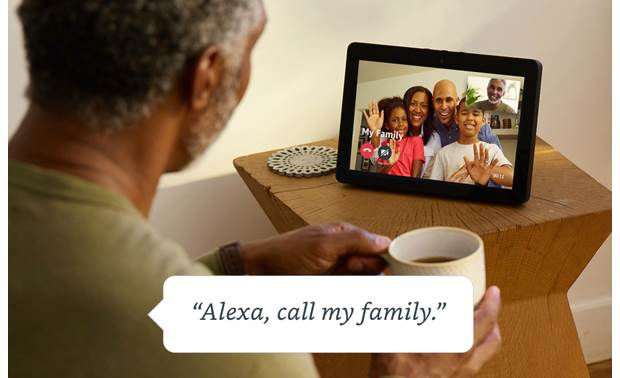Assistive Technology Devices (ATDs) for Seniors
- Easy Tech for Seniors

- Sep 13, 2019
- 3 min read
Updated: Sep 30, 2019

For Seniors and Caregivers, assistive technology can make all the difference in allowing Seniors the ability to live independently and stay connected to friends and loved ones. Assistive technology can also reduce the need and cost for long-term nursing or in-home care. Many Seniors taking advantage of various forms of assistive technology are able to significantly reduce their dependence on others and enjoy living a more productive and rewarding lifestyle.
Assistive technology devices (ATDs) can significantly reduce the cost of in-home or nursing care for Seniors and their families while ensuring a high quality of life, safety, and enjoyment. Keeping Seniors active and engaged through the use of ATDs allows them to continue living a fulfilling life with dignity.
The types of available ATDs and related services are as varied as the challenges faced by today’s aging Seniors. Some of the assistive devices Seniors have found most helpful include the following:
Sensory enhancements. Devices designed to make it easier for those who are partially or fully blind or deaf to better appreciate the world around them. Some popular examples are: hearing aids, electronic magnifiers, magnifier phone apps, telephone amplifier, large display devices (clocks/phone/TV remotes), talking alarm clock, etc.
Communication devices. Equipment enabling Seniors to send and receive messages. Examples include phones, tablets with video chat capability, smart speakers, smart displays, and caregiver paging systems.
Emergency/Medical Alert Systems. Systems that provide Seniors with fast, reliable communication with a caregiver or emergency personnel in the event of a fall, fire, injury, medical issue, or any other life-threatening emergency. Some highly recommended systems include: LifeStation Mobile GPS Medical Alert and CallToU Wireless Caregiver Call System.
Safety/Security devices. Devices that provide Seniors additional safety from falls or other injuries. Recommendations include: motion or voice-activated lights, GPS tracking device, weight-sensing bed pad, automatic night light, wireless camera, personal alarm, etc.
Reminder devices. Any device designed to provide reminders for daily tasks (taking medication, calling caregiver/family, appointments, etc. Examples include: pill organizer, reminder clock, wireless locator tags (for wallets, purses, etc.)
Seating aids. Modifications to regular chairs, wheelchairs, or motor scooters that help a person stay upright or get up and down unaided. Examples include: power lift chair, sit-to-stand lifts, and seat assist cushions.
Tools for independent living. Anything that empowers the elderly to enjoy the normal activities of daily living without assistance from others, like a handicapped-accessible bathroom with grab bars in the bathtub, automatic jar opener, and extended"Reacher Grabber".
Comfort items. Devices that improve Seniors comfort and well-being. Items include: adjustable heating pads, electronic hand warmers, massage pads/devices, leg compression massager, etc.
Adaptive switches. Modified switches that seniors can use to adjust air conditioners, computers, telephone answering machines, power wheelchairs, and other types of equipment. These switches might be activated by the tongue or the voice.
Mobility aids. Any piece of equipment that helps a senior get around more easily, like a power wheelchair, wheelchair lift, stair elevator, or mobility scooter.
Orthotic or prosthetic equipment. A device that compensates for a missing or disabled body part. This could range from orthopedic shoe inserts for someone who has fallen arches to an artificial arm for someone whose limb has been amputated.
Computer/Internet access. Special software that helps Seniors access the Internet, for example, or basic hardware, like a modified keyboard or mouse, that makes the computer more user-friendly.
Therapy. Equipment or processes that help someone recover as much as possible from an illness or injury. Treatment might involve a combination of services and technology, like having a physical therapist use a special massage unit to restore a broader range of motion to stiff muscles. Some recommendations are: physiotherapy machine, leg exerciser, and mini exercise bike.
Choosing the right Assistive Technology solution for you or someone you love.
With thousands of AT products from numerous manufacturers, it can be challenging and confusing to find the right assistive technology solution for you or a loved one. We highly encourage you to research AT products you're interested in and ask other Seniors for recommendations. Easy Tech for Seniors is here to help with concise, easy-to-understand reviews, top lists, and educational articles without a lot of technical jargon. If you’re having a hard time finding the right product or device, please send us an email and we’ll be happy to assist you in finding the right solution with recommendations to meet your needs and budget.
The area of assistive technology devices has grown tremendously in recent years, and many Seniors can benefit significantly from these advances. Assistive Technology Devices are allowing Seniors greater freedom while providing increased enjoyment, overcoming loneliness, and living healthier, more fulfilling lives. It’s a great time to be a Senior!












Comments